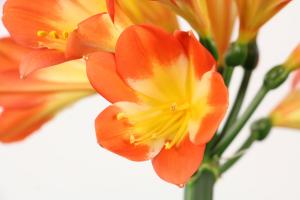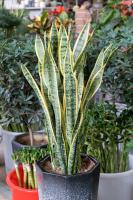Introduction
Daisy pom plants are beautiful indoor plants that brighten up your living space with their colorful flowers. These plants are relatively easy to care for, and with a little attention, you can enjoy their beauty for years to come. In this article, we will provide you with some tips on how to take care of indoor potted daisy pom plants.
Choosing the Right Pot and Soil
The first step in taking care of indoor potted daisy pom plants is choosing the right pot and soil. Make sure the pot has drainage holes to allow excess water to drain out. This prevents waterlogging and ensures healthy growth of your plant. Choose a potting mix that is well-drained, light, and airy. You can add perlite or sand to improve drainage, and vermiculite to retain moisture.
Watering and Fertilizing
Watering is a critical aspect of taking care of indoor potted daisy pom plants. Water the plant only when the top inch of soil feels dry to the touch. Be careful not to overwater as this can lead to root rot. Fertilize the plant monthly with a balanced liquid fertilizer. Follow the instructions on the fertilizer pack for the correct dosage and dilution. Overfertilizing can lead to burnt leaves and stunted growth.
Lighting and Temperature
Daisy pom plants need bright, indirect sunlight to thrive. Place them near a south or west-facing window that receives sunlight for at least six hours a day. If your plant does not receive enough light, it may become leggy and not produce blooms. The ideal temperature range for daisy pom plants is between 65°F to 75°F. Avoid exposing your plant to temperatures below 50°F or above 85°F.
Pruning and Deadheading
To keep your indoor potted daisy pom plant looking its best, it is essential to prune and deadhead regularly. Deadhead by removing spent blooms to encourage the plant to produce more flowers. Pruning is done to remove yellow or brown leaves, stems, or branches. Use a pair of clean and sharp scissors to avoid damaging the plant
Pest Control
Daisy pom plants are susceptible to pests like aphids, spider mites, and whiteflies. Regularly inspect your plants for signs of pests, including yellowing leaves, white spots, or webbing. If you notice any signs of infestation, immediately isolate the plant and use an insecticidal soap, neem oil, or a commercial pesticide to control the pests.
Conclusion
In summary, taking care of indoor potted daisy pom plants requires proper potting, soil, watering, fertilizing, lighting, temperature, pruning and deadheading, and pest control. With a little care and attention, you can enjoy the beauty of these plants in your home or office for years to come.

 how many times do yo...
how many times do yo... how many planted tre...
how many planted tre... how many pine trees ...
how many pine trees ... how many pecan trees...
how many pecan trees... how many plants comp...
how many plants comp... how many plants can ...
how many plants can ... how many plants and ...
how many plants and ... how many pepper plan...
how many pepper plan...






























